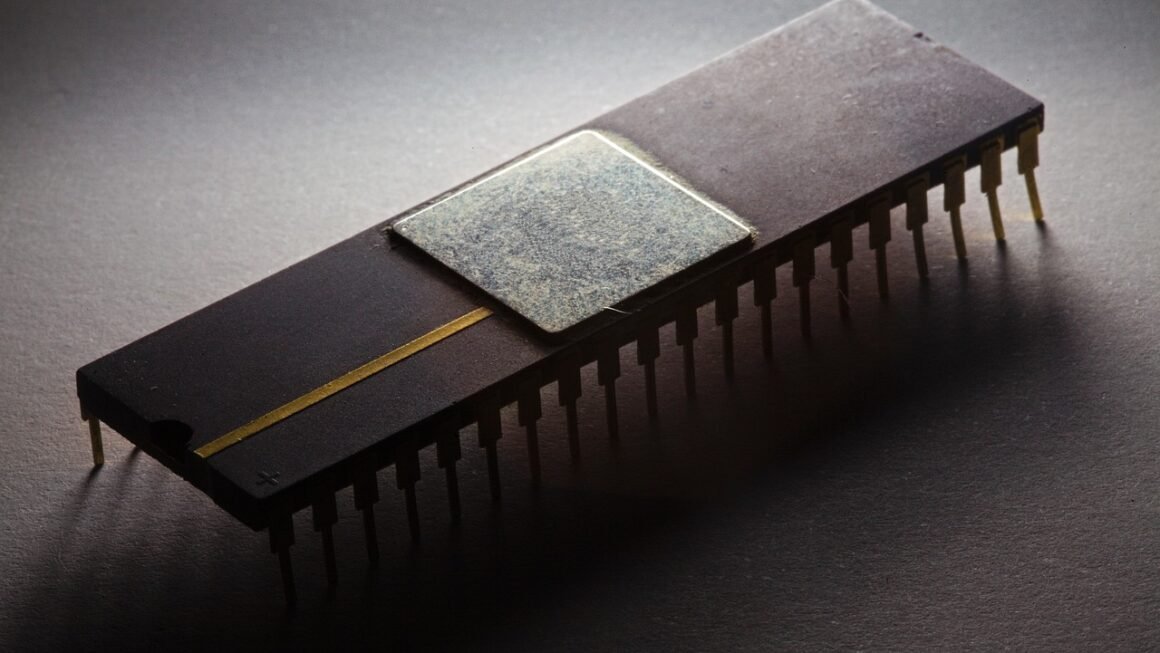Nanotechnology, the manipulation of matter at the atomic and molecular scale, is no longer just a futuristic concept. It’s a rapidly evolving field impacting diverse industries, from medicine and electronics to energy and manufacturing. This post delves into the fascinating world of nanotechnology, exploring its principles, applications, and potential for transforming our future.
Understanding Nanotechnology: The Basics
What is Nanotechnology?
At its core, nanotechnology involves working with materials and devices at the nanoscale – that’s between 1 and 100 nanometers. To put that into perspective, a nanometer is one billionth of a meter, approximately 80,000 times smaller than the diameter of a human hair. At this scale, materials often exhibit unique properties different from their bulk counterparts. These properties can include increased strength, different electrical conductivity, and altered reactivity. Nanotechnology allows us to harness these unique properties to create innovative products and solutions.
Key Principles of Nanotechnology
- Manipulation at the Atomic Level: Nanotechnology involves precisely controlling individual atoms and molecules to build structures with specific functionalities.
- Exploitation of Quantum Mechanics: At the nanoscale, quantum mechanical effects become significant, influencing the behavior of materials.
- Surface Area to Volume Ratio: Nanomaterials have a significantly higher surface area to volume ratio compared to bulk materials, leading to enhanced reactivity.
- Bottom-Up and Top-Down Approaches: Nanomaterials can be created using either a bottom-up approach (assembling atoms and molecules) or a top-down approach (reducing bulk materials to nanoscale dimensions).
Nanomaterials: The Building Blocks of Nanotechnology
The key to nanotechnology lies in nanomaterials, which exhibit unique properties that can be tailored for specific applications. Common types of nanomaterials include:
- Nanoparticles: Tiny particles with dimensions in the nanoscale, such as gold nanoparticles used in medical imaging and drug delivery.
- Nanotubes: Cylindrical structures made of carbon atoms, known for their exceptional strength and electrical conductivity, used in electronics and composites.
- Nanosheets: Two-dimensional materials, such as graphene, with remarkable properties, used in sensors and electronics.
- Quantum Dots: Semiconductor nanocrystals that exhibit quantum mechanical properties, used in displays and bioimaging.
Nanotechnology Applications Across Industries
Nanotechnology in Medicine: Nanomedicine
Nanotechnology is revolutionizing healthcare with the development of nanomedicine, which offers targeted drug delivery, advanced diagnostics, and regenerative medicine solutions.
- Targeted Drug Delivery: Nanoparticles can be engineered to deliver drugs directly to cancer cells, minimizing side effects and improving treatment efficacy. For example, liposomes (nano-sized vesicles) encapsulate drugs and release them at the tumor site.
- Medical Imaging: Quantum dots and gold nanoparticles are used as contrast agents in medical imaging techniques like MRI and CT scans, improving the resolution and accuracy of diagnostic imaging.
- Regenerative Medicine: Nanomaterials are used to create scaffolds that promote tissue regeneration and repair, such as bone grafts and skin substitutes. For example, nanofiber scaffolds can mimic the extracellular matrix, providing a framework for cell growth.
Nanotechnology in Electronics: Nanoelectronics
Nanoelectronics involves the use of nanomaterials to develop smaller, faster, and more energy-efficient electronic devices.
- Next-Generation Transistors: Carbon nanotubes and graphene are being explored as replacements for silicon in transistors, enabling faster switching speeds and lower power consumption.
- High-Density Data Storage: Nanomaterials can be used to create high-density data storage devices, allowing for more data to be stored in smaller spaces.
- Flexible Electronics: Nanomaterials are used to develop flexible and bendable electronic devices, such as wearable sensors and foldable displays. For instance, silver nanowires can create conductive inks for flexible circuits.
Nanotechnology in Energy: Sustainable Solutions
Nanotechnology is playing a crucial role in developing sustainable energy solutions, including improved solar cells, energy storage devices, and energy-efficient materials.
- Improved Solar Cells: Nanomaterials can enhance the efficiency of solar cells by increasing light absorption and improving charge transport. For instance, quantum dots can capture a wider range of solar spectrum.
- Energy Storage Devices: Nanomaterials are used to develop high-capacity batteries and supercapacitors, enabling longer battery life and faster charging times. Lithium-ion batteries containing nano-structured electrodes increase the surface area for lithium intercalation.
- Energy-Efficient Materials: Nanomaterials are used to create energy-efficient building materials, such as insulation and coatings that reduce energy consumption. Nano-coatings on windows can reduce heat transfer, lowering energy bills.
Nanotechnology in Manufacturing: Enhanced Materials
Nanotechnology is transforming manufacturing by enabling the creation of stronger, lighter, and more durable materials.
- Composite Materials: Nanomaterials are used to reinforce composite materials, improving their strength, stiffness, and durability. Carbon nanotubes are added to polymers to create lightweight and strong composites for aerospace and automotive applications.
- Coatings and Surfaces: Nanocoatings are used to enhance the properties of surfaces, such as making them scratch-resistant, water-repellent, or antimicrobial. Self-cleaning windows utilize nano-TiO2 coating, which breaks down organic dirt.
- Textiles: Nanotechnology can modify the properties of textiles, creating stain-resistant, wrinkle-free, and antimicrobial fabrics. Silver nanoparticles are embedded in fabrics to prevent the growth of bacteria and odors.
Benefits and Potential of Nanotechnology
Nanotechnology offers numerous benefits and has the potential to transform various aspects of our lives.
- Improved Healthcare: More effective treatments, faster diagnostics, and regenerative medicine solutions.
- Enhanced Electronics: Smaller, faster, and more energy-efficient electronic devices.
- Sustainable Energy: Improved solar cells, energy storage devices, and energy-efficient materials.
- Advanced Manufacturing: Stronger, lighter, and more durable materials.
- Environmental Remediation: Nanomaterials can be used to clean up pollutants in the air and water.
- Economic Growth: The nanotechnology industry is creating new jobs and driving economic growth.
Challenges and Considerations
Despite its vast potential, nanotechnology also faces challenges and raises ethical considerations.
Environmental Impact
- The potential toxicity of nanomaterials to the environment and human health needs further investigation.
- Proper disposal and recycling methods for nanomaterials are essential to prevent environmental contamination.
Ethical Concerns
- The use of nanotechnology in surveillance and military applications raises ethical concerns.
- The potential for unequal access to nanotechnology-based products and services needs to be addressed.
Regulation and Standardization
- Clear regulations and standards are needed to ensure the safe and responsible development and use of nanotechnology.
- International collaboration is essential to harmonize regulations and standards across different countries.
Conclusion
Nanotechnology is a groundbreaking field with the potential to revolutionize industries and solve some of the world’s most pressing challenges. While it presents certain challenges that must be addressed responsibly, its numerous benefits and applications make it a critical area of research and development. As nanotechnology continues to advance, we can expect to see even more innovative solutions emerge, transforming our lives and shaping the future.



